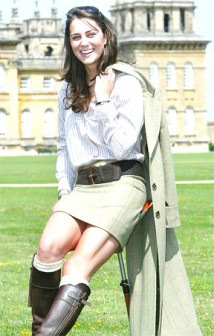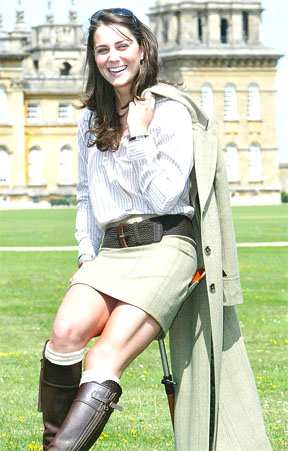LONDON (Reuters Life!) – When Kate Middleton said “yes” to Prince William’s marriage proposal, she was not just agreeing to become the wife of a future British king.
She was also signing up to massive media intrusion in her private life and years of intense attention from paparazzi photographers.
The question she and her future husband will now be pondering is whether that attention can be managed or if they will suffer from the same insatiable press frenzy that ultimately led to the death of William’s mother, Princess Diana.
 “There’s huge interest. William has become the star of the royal family that his mother was and Kate’s an attractive girl, so from a paparazzi point of view she potentially means a lot of money,” said Max Clifford, Britain’s best-known publicist.
“There’s huge interest. William has become the star of the royal family that his mother was and Kate’s an attractive girl, so from a paparazzi point of view she potentially means a lot of money,” said Max Clifford, Britain’s best-known publicist.
“And these days the paparazzi are anyone — anyone with a camera, anyone with a mobile phone,” he told Reuters.
The couple’s wedding on April 29 comes almost 14 years after Diana was killed with her lover Dodi al-Fayed when their limousine crashed into the wall of a Paris tunnel as they tried to escape from a posse of chasing paparazzi.
A British inquest in 2008 concluded the actions of the photographers were partly to blame for the fatal accident.
So far William and Kate, who began dating while at university in Scotland, have been largely spared the level of scrutiny that Diana suffered, partly through media restraint and because of more robust action from the royal family itself.
However, Middleton was mobbed by photographers on her way to work on her 25th birthday in 2007 and later that year formally complained to Britain’s media watchdog, the Press Complaints Commission (PCC), after one newspaper published a picture of her which she said was taken as the result of harassment.
William has also complained that photographers on motorbikes had aggressively followed them after leaving a nightclub, while Queen Elizabeth has written to editors about paparazzi intruding on the royal family’s privacy.
The crucial factor for the future will be the attitude of newspaper and magazine editors. If they do not use or pay for paparazzi pictures, there will clearly be less incentive for photographers to hound the royal couple.
“The judgment that editors will make will be ‘can we justify showing this photo, breaking this news story, with our readers?’“ Clifford said.
“Is it going to put them off or make more of them want to buy the paper or magazine? And that’s the most important thing to all newspaper editors.”
He predicted the couple’s easy ride would continue initially, because upsetting the popular newlyweds is likely to upset their readers too.
“As time goes by, if opportunities come along then of course the media will exploit her because it sells papers,” he said.
“They will be looking to see if there’s an angle there that obviously the more sensational, the more people will want to read it.”
Following Diana’s death, the public turned against both the media and the royal family, regarding the latter as an aloof and out of touch institution which left Diana to suffer at the hands of a remorseless press.
Now, royal aides have developed a more intuitive, thoughtful, sensible, and workmanlike approach, experts say.
“What they’ve done is develop a kind of stick and carrot approach to the world media and in particular to the paparazzi, and they have warned the paparazzi off quite severely,” royal biographer Christopher Wilson told Reuters.











